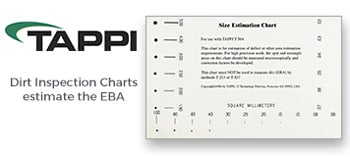 Search
Search
Use the search bar or filters below to find any TAPPI product or publication.
Filters
Content Type
Publications
Level of Knowledge
Collections
Journal articles

Magazine articles

Eucalyptus black liquor properties in a lignin extraction process: density, dry solids, viscosity, inorganic, and organic content, TAPPI Journal March 2023
ABSTRACT: Extracting lignin from black liquor is becoming more common, although only a few research papers discuss the impact of the process on the liquor’s primary properties. This work aims to determine the changes in black liquor properties as it undergoes a lignin extraction process using carbon dioxide (CO2). A diluted eucalyptus black liquor sample (DBL) was acidified with CO2 to a final pH of 8.5. After filtration, the kraft lignin was removed, and the filtrated lignin lean black liquor (LLBL) was collected. Five acidified black liquors (ABL) samples were collected during acidification at pH 10.5; 10.0; 9.5; 9.0; and 8.5. The samples were analyzed regarding lignin content in solution, sodium carbonate (Na2CO3), sodium sulfate (Na2SO4), density, dry solids content, and viscosity. While Na2SO4 remained almost constant, Na2CO3 presented an enormous increase in its concentration when comparing DBL with LLBL. As pH decreased, the lignin content in the solution was also reduced due to lignin precipitation. The results showed similar behavior for dry solids, density, and viscosity of the supernatant, but an increase in density was observed around pH 9.00. In light of this, the density of LLBL turns out to be closer to the one in the initial DBL. The significant increase in carbonate content could explain this behavior during acidification with CO2 once the inorganic content significantly influences the property. The viscosity was determined from 10 s-1 to 2000 s-1. We observed a Newtonian behavior for all samples. The increase in carbonate content in the sample is crucial information to the recovery cycle, especially for calculating the mass and energy balance when targeting the use of the LLBL.
Journal articles

Magazine articles

Application of fuzzy TOPSIS in the Analyze phase of the DMAIC cycle to aid decision-making, TAPPI Journal April 2020
ABSTRACT: This paper reports the use of multicriteria analysis in the Analyze phase of the DMAIC (Define-Measure-Analyze-Improve-Control) cycle for continuous improvement. The research was carried out in a tissue paper factory located in southern Brazil. A sample of 64 parts of 16 different reels of recycled paper was used. A problem regarding paper quality variability was detected, presenting a scrap index ranging between 9% and 23%, compromising machine productivity and product sales. This motivated the implementation of a structured project supported by the application of the DMAIC cycle. The project team (machine operators, maintenance staff, supervisor, and data analyst) defined the evaluation criteria and determined the control intervals and their equivalence with linguistic variables to support the necessary evaluations for the application of fuzzy TOPSIS (Technique for Order of Preference by Similarity to Ideal Solution). The criteria were C1-Longitudinal Strength (Kgf), C2-Longitudinal Elongation (mm), C3-Cross-strength (kgf), C4-Cross-elongation (mm), C5-Weight (g/m²), and C6-Humidity (%). The results showed that samples with the same ranking had the lowest scrap indexes in the subsequent process. Also, the criterion C5 had a more significant impact on the quality of the product than the other criteria, which was determined from the DMAIC sequence. Improvements related to C5 should be prioritized. The fuzzy TOPSIS method presented is a flexible tool, adapting itself to the solution of the problem and contributing to the decision-making process.
Journal articles

Magazine articles

Improving monochloramine performance with innovative sensor-controlled dosing, TAPPI Journal January 2024
ABSTRACT: Monochloramine (MCA) has become one of the major oxidant chemistries for biological control in the paper industry. Feedback control, such as oxidative-reductive potential (ORP), is often used to provide better control of a dosing scheme. The trademarked Ackumen MCA-i is a chemical-digital solution that uses artificial intelligence with actionable insights to stabilize the wet-end process, providing improved performance and reduction in overall chemical costs. Accurate sensor-controlled dosing can be tied to multiple inputs, such as production rates, grade changes, pH, ORP, chlorine residual, freshwater usage, and more. In this study, a case history will be presented to demonstrate how this technology provided a more consistent MCA molecule throughout the process, resulting in a higher level of efficacy and reduction in chemical costs.
Journal articles

Magazine articles

Spraying starch on the Fourdrinier— An option between wet end starch and the size press, TAPPI Journal January 2021
ABSTRACT: Technology to apply suspensions of starch grains to the wet surface of paper, during the dewatering process, is reviewed. Though the technology is not new, it continues to attract the attention of papermakers as a means to increase bonding strength. Starch grains that are sprayed onto the wet-web of paper can be retained at levels exceeding what can be effectively added to the fiber suspension at the wet end. Unlike adding a starch solution at a size press, no additional drying capacity is required on the paper machine. To be effective, the starch needs to be able to swell and develop bonding during the paper drying process. Paperboard applications with recycled fibers appear to be a good fit. There is potential to increase bonding by processes that favor fuller gelatinization of the starch grains by the time the paper becomes dry.
Journal articles

Magazine articles

Next generation dry strength additives: Leveraging on-site synthesis to develop high performance glyoxalated polyacrylamides, TAPPI Journal January 2024
ABSTRACT: Although glyoxalated polyacrylamides (gPAMs) have been described since the 1950s, the freedom to design new materials based on this chemistry has been limited by practical concerns; namely, a balance between solution concentration and material characteristics must be met to make the economics of gPAM strength additives work for the paper industry. For traditional “delivered” gPAMs, only a very narrow range of polyacrylamide molecular weights and compositions could be considered for glyoxalation. However, the development and successful implementation of automated reactor equipment that allows for the synthesis of gPAMs from glyoxal and polyacrylamide copolymers at the mill, known as “on-site” glyoxalation, obviates the shipping and stability concerns that have traditionally held back gPAM development. As such, on-site generators represent a platform that enables the glyoxalation of materials that would otherwise not have been suitable for use in a traditionally delivered gPAM product. These on-site generators therefore open new avenues for polymer design to allow for the creation of the next generation of strength additives. By leveraging the synthetic freedom of the on-site generators, a suite of high performance gPAMs has been designed, yielding materials that provide both exceptional strength and drainage performance in poor quality furnishes.
Journal articles

Magazine articles

Polyvinyl alcohol as foaming agent in foam formed paper, TAPPI JOURNAL August 2019
ABSTRACT: The use of polyvinyl alcohol (PVOH or PVA) as a foaming agent in foam formed paper was investigated. Polyvinyl alcohol is a linear, nonionic water-soluble polymer. It has hydrophobic and hydrophilic parts that give it a surface-active character. PVOH is mainly characterized by degree of hydrolysis and molar mass. Degree of hydrolysis is given as mol-% hydroxyl groups on the polymer. Molar mass is measured indirectly by measuring the viscosity of a 4% PVOH solution. The results show that the degree of hydrolysis of PVOH had a strong effect on the foamability of PVOH. Foamability decreased strongly when the degree of hydrolysis increased from 88 to 98 mol-%. The effect of molar mass on foamability was weaker. We saw an increase in foam stability and bubble size with increasing molar mass, but we did not see any effect on maximum air content. PVOH dosage needed to reach >70% air content (F) varied from 2 g/l up to 10.5 g/l, and the lowest addition levels of PVOH needed were achieved with a low molar mass PVOH with a low degree of hydrolysis. The best strength properties were achieved when using fully hydrolyzed PVOH as the foaming agent. Strength properties (both in- and out-of-plane) of samples made using PVOH were better than those made using an anionic foaming agent (sodium dodecyl sulfate, SDS). By adding PVOH binder fibers to the pulp, we were able to further enhance the strength properties of paper and board.
Magazine articles

Editor's Note: Positive prospects for coated products, TAPPI
Editor's Note: Positive prospects for coated products, TAPPI JOURNAL May 2010
Journal articles

Magazine articles

Editor's Note: An Ideal Raw Material for Pulp and Paper, TAP
Editor's Note: An Ideal Raw Material for Pulp and Paper, TAPPI JOURNAL March 2010
Magazine articles

What does it take to get my paper published?, TAPPI JOURNAL,
What does it take to get my paper published?, TAPPI JOURNAL, March 2002, Vol. 1(1) (62KB)
Magazine articles

Editor's Note: Bright future for coating at ACFS, TAPPI JOUR
Editor's Note: Bright future for coating at ACFS, TAPPI JOURNAL November 2010





